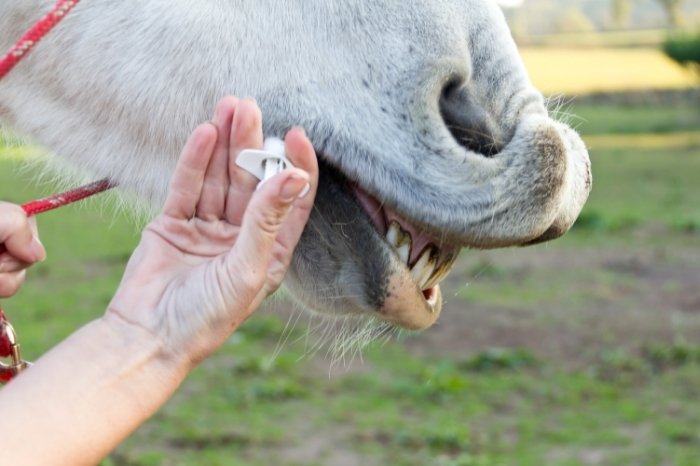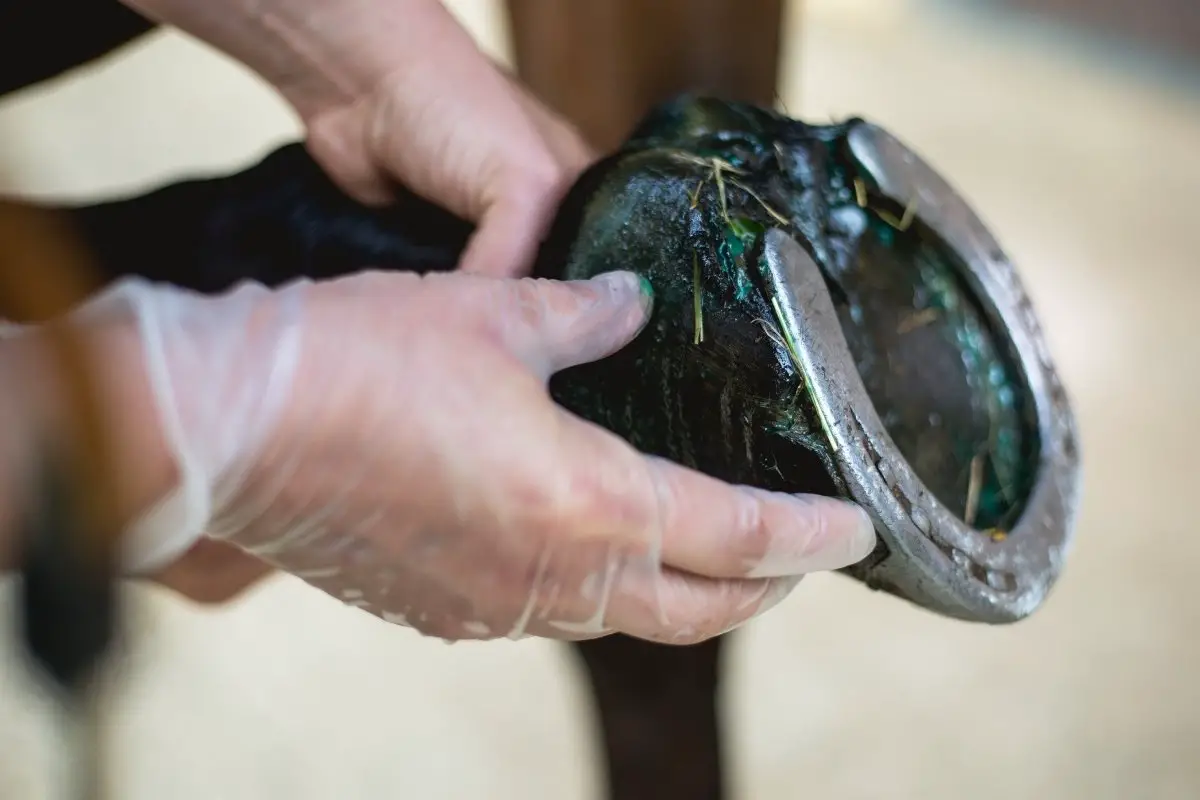Last Updated on March 22, 2022 by Cristina
If you have ever come across an abscess in horse hooves, you will know how difficult this painful condition can be to treat. Let’s find out everything we need to know about abscess in horse hooves!
What Is An Abscess In Horse Hooves?
An abscess in a horse’s hoof is a build-up of pus. Pus is produced by bacteria, and an abscess occurs when the hoof becomes infected.
Normally, when an abscess bursts the bacteria can be flushed out of the wound, curing the infection. However, when an abscess is trapped in the hard tissues of the horse’s hoof it can be very difficult to find and burst the abscess.
What Is An Abscess In Horse Hooves Caused By?
When a horse has a hoof abscess, this is the result of bacteria that has been able to penetrate the hoof capsule. This can occur for a range of reasons:
- A foreign object, such as a nail, may have penetrated the hoof.
- The farrier may have put a nail in the wrong location.
- The hooves are poor quality, with cracks and splits. This can be caused by prolonged wet weather, or the weather changing from wet to dry, or vice versa.
- If the hooves are not regularly attended by a farrier, they can become misshapen and split.
Read more about EPM In Horses Is Caused By What Organism?
What Are The Symptoms Of An Abscess In Horse Hooves?
The first thing you will notice when a horse has a foot abscess is that it will be lame. The lameness is quite mild to start with but quickly progresses to severe lameness. In fact, a horse is so lame with a foot abscess that it can be easy to think that it has a fractured bone!
If you find that your horse is lame, the best place to start your examination is at the hoof. Firstly, you need to check if the digital pulses are elevated. To do this, you place your fingers on either side of the back of the pastern, to see if you can feel a strong pulse.
If the pulse in the affected hoof is stronger than the pulse in the other limbs, this is an indication that the lameness is within the hoof. This occurs because the blood supply to the injured hoof is stronger, as the body attempts to heal the problem.
Absorbine Bute-Less Long-Term Horse Comfort & Recovery Supplement Paste, Gentle on Stomach
Another sign of a hoof abscess in a horse is pain in certain areas of the hoof. If you press around the coronet band, at the top of the hoof, you might find a certain spot where the horse flinches and pulls his hoof away. Your veterinarian may also use a metal tool called a hoof tester to identify painful areas within the hoof capsule.
When the abscess bursts, you will see a small amount of dark pus leaking from the abscess. This might come out either at the coronet band or from the hoof itself. The smell of the pus created by a hoof abscess is unmistakable, as it is incredibly strong and foul-smelling!
Click Here to Get Info About:
What Is The Best Treatment For An Abscess In Horse Hooves?
For a hoof abscess to heal, it needs to burst. This condition is very painful for the horse, and we should do everything we can to encourage the abscess to burst as quickly as possible.
If there is a clear indication of the location of the abscess, your veterinarian or farrier may be able to pare away the solid hoof tissue to release the pus. This is the quickest way to treat a hoof abscess, but they are not always that easy to locate!
In a situation where the abscess cannot be found, it may be necessary to take radiographs of the hoof to identify the site. You may also need to poultice the hoof to encourage the abscess to burst. Your veterinarian should prescribe anti-inflammatory painkillers to keep your horse comfortable.

Once the abscess is located and treatment is underway, your farrier and veterinarian will attempt to remedy the initial cause of the problem. You may need to ensure that your horse has his hooves trimmed more frequently, or change your management to allow the hooves to dry out.
Abscess In Horse Hooves Summary
So, as we have learned, horses can get hoof abscesses because the hoof is misshapen or poor quality, or when a foreign object penetrates the hoof capsule. When a horse has a hoof abscess it will be incredibly lame, until the abscess bursts. The best treatment for a hoof abscess is to encourage the abscess to burst and focus on improving the quality of the horse’s hooves.
We’d love to hear your thoughts on hoof abscesses in horses! Do you have a horse or pony that frequently gets a hoof abscess? Or maybe you’ve got a new way to get a hoof abscess to burst? Leave a comment below and we’ll get back to you!
FAQ’s
How Do I Know If My Horse Has A Hoof Abscess?
If your horse has a hoof abscess, he will be very lame. He might be painful on a particular area of the hoof, or be reluctant to put the hoof on the floor. Hoof abscesses cause a large amount of discomfort, and your horse may even stop eating.
How Do You Treat An Abscess On A Horse’s Hoof?
A hoof abscess on a horse's hoof can only be treated by bursting the abscess and allowing it to drain. Antibiotics are not commonly used to treat hoof abscesses in horses. They may make the problem go away for a short while, but the abscess will eventually return.
How Do You Draw Out A Hoof Abscess?
The best way to draw out a hoof abscess in a horse is by using a poultice. This is a special dressing that encourages the pus to drain from the abscess, by drawing it into the poultice. It is common to use a warm, wet poultice at first, then switch to a dry poultice when the amount of pus starts to reduce.
How Long Does It Take For An Abscess To Burst In A Hoof?
It can take several days for an abscess to burst in a hoof, which will be very painful for the horse. This is why it is better to encourage the abscess to rupture and drain, which will provide instant relief from the pain.

